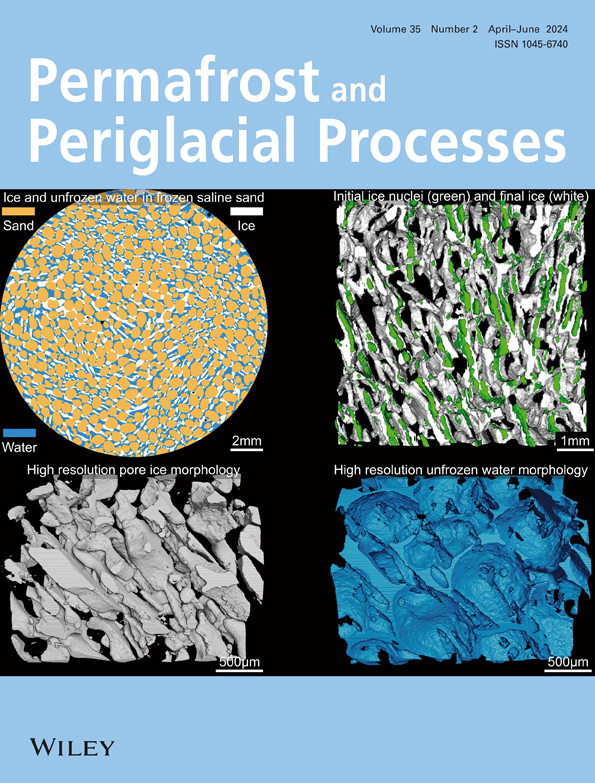Fine‐scale environment control on ground surface temperature and thaw depth in a High Arctic tundra landscape
IF 3.3
3区 地球科学
Q2 GEOGRAPHY, PHYSICAL
引用次数: 1
Abstract
Surface conditions are known to mediate the impacts of climate warming on permafrost. This calls for a better understanding of the environmental conditions that control the thermal regime and the depth of the active layer, especially within heterogeneous tundra landscapes. This study analyzed the spatial relationships between thaw depths, ground surface temperature (GST), and environmental conditions in a High Arctic tundra environment at Bylot Island, Nunavut, Canada. Measurements were distributed within the two dominant landforms, namely earth hummocks and low‐center polygons, and across a topographic gradient. Our results revealed that GST and thaw depth were highly heterogeneous, varying by up to 3.7°C and by more than 20 cm over short distances (<1 m) within periglacial landforms. This microscale variability sometimes surpassed the variability at the hillslope scale, especially in summer. Late‐winter snowpack thickness was found to be the prime control on the spatial variability in winter soil temperatures due to the highly heterogeneous snow cover induced by blowing snow, and this thermal effect carried over into summer. However, microtopography was the predominant driver of the spatial variability in summer GST, followed by altitude and moss thickness. In contrast, the spatial variability in thaw depth was influenced predominantly by variations in moss thickness. Hence, summer microclimate conditions dominated active layer development, but a thicker snowpack favored soil cooling in the following summer, due to the later disappearance of snow cover. These results enhance our understanding of High Arctic tundra environments and highlight the complexity of considering surface feedback effects in future projections of permafrost states within heterogeneous tundra landscapes.北极高寒苔原地表温度和融化深度的精细尺度环境控制
本文章由计算机程序翻译,如有差异,请以英文原文为准。
求助全文
约1分钟内获得全文
求助全文
来源期刊
CiteScore
9.70
自引率
8.00%
发文量
43
审稿时长
>12 weeks
期刊介绍:
Permafrost and Periglacial Processes is an international journal dedicated to the rapid publication of scientific and technical papers concerned with earth surface cryogenic processes, landforms and sediments present in a variety of (Sub) Arctic, Antarctic and High Mountain environments. It provides an efficient vehicle of communication amongst those with an interest in the cold, non-glacial geosciences. The focus is on (1) original research based on geomorphological, hydrological, sedimentological, geotechnical and engineering aspects of these areas and (2) original research carried out upon relict features where the objective has been to reconstruct the nature of the processes and/or palaeoenvironments which gave rise to these features, as opposed to purely stratigraphical considerations. The journal also publishes short communications, reviews, discussions and book reviews. The high scientific standard, interdisciplinary character and worldwide representation of PPP are maintained by regional editorial support and a rigorous refereeing system.

 求助内容:
求助内容: 应助结果提醒方式:
应助结果提醒方式:


